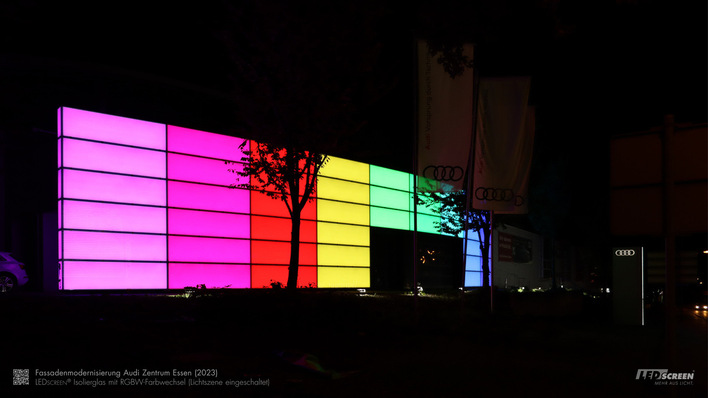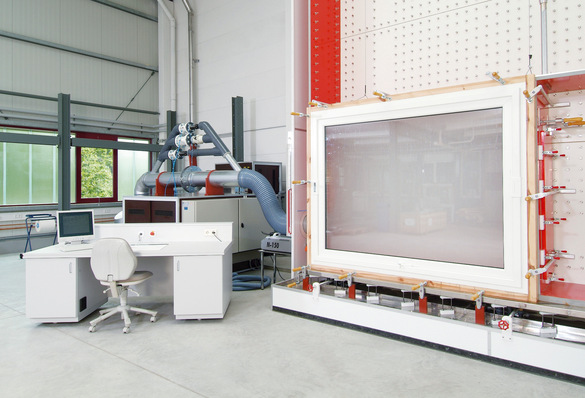The new dance factory with a total floor space of 8,640 square metres was designed by Glenn Howells Architects (GHA). The biggest challenge for the architects was to design a flexible, modern venue for dance on a limited site in London within a manageable budget. Glenn Howells, director and founder of GHA said: "The challenge was to design a building whose character is defined by the combination of exposed raw materials such as concrete ceilings and a translucent profiled glass facade". The white shell, a special design feature, contrasts with the coloured buildings in the vicinity and draws the attention of passers-by to the dancers in the rehearsal rooms. The main production studio offers the dancers a stage area measuring 10 by 15 meter. The rehearsal studios have a size of 15 by 15 metres. Their floor-to-ceiling windows provide a view into the interior for people walking past.
3,600 square metres of double-layered Linit P26/60/7 extra white translucent glass encases the building. In order to meet the thermal insulation requirements, the profiled glass facade is equipped with 1,178 square metres of TIMax GL-PlusF Translucent Thermal Insulation from Wacotech GmbH & Co KG in Herford, Germany. This enables the facade to achieve a heat transfer coefficient (Ug-value) of 1.2W/m²K. The TTI fulfils the requirements for thermal insulation and also offers protection against heat and unwanted views in summer, thus preserving the intimacy of the dancers in the rehearsal rooms. The high light diffusion of the UV and temperature-stable thermal insulation insert improves the use of daylight in the spacious staircase as well as in the rehearsal rooms and achieves a shadow-free and glare-free room illumination. Thermal insulation value (Ug-value) and light transmission were among the factors that contributed to the use of TIMax GL-PlusF. In addition, the recyclability of the spun glass was an important factor for the BREEAM rating. BREEAM (Building Research Establishment Environmental Assessment Methodology) is a rating system for ecological and socio-cultural aspects of the sustainability of buildings.

















